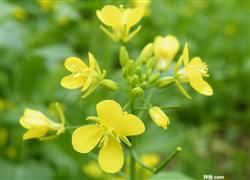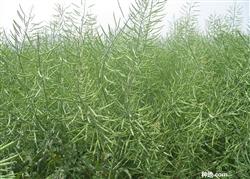How to prevent and cure rape root swelling disease

How to prevent and cure rape root swelling disease? Please introduce that rape root swelling disease occurs in the root, the bacteria usually invade from the root hair or young root, and form a tumor on the main root or lateral root. It is commonly known as "brain shell disease". The initial surface is smooth and white, and then the color becomes brown, rough and cracked. It is easy to be infected by other bacteria and stink, and some new roots can grow from the upper part of the main root or the base of the stem because of the lower decay. When the harm in the seedling stage is serious, it can make the seedlings die. When the disease occurs in the adult stage, the color of the lower leaves of the plant becomes lighter, the plant is short, and the outer leaves wither at noon and can recover sooner or later. The patients with severe disease could not recover after a few days, and finally the whole plant withered and died. If the disease is mild, it can bear fruit when the fertilizer and water are sufficient. However, the plant was slender, the branches decreased, and the yield decreased sharply. "there are five causes of rape root swelling disease: soil, climate, variety, fertilization and sowing method." Wang Shuang said that rape root swelling disease is a soil-borne disease. Once it occurs, it is difficult for ordinary control and pesticides to achieve the desired effect, so it is best to adopt comprehensive control measures. According to reports, disease-resistant varieties should be selected for comprehensive control measures. It is suggested that the villages and towns with severe disease should choose relatively resistant varieties, such as Xingyou No. 2 and Deyou No. 5, with local varieties. Carry out crop rotation. Due to the strong stress resistance of dormant leopards, rape fields with serious disease practice rotation for 4 to 5 years. Rape and cruciferous vegetables should not be planted within the specified number of years of crop rotation. Fields with mild disease can rotate wheat for one year to reduce the occurrence. Raise seedlings and transplant. The field that has not planted cruciferous crops for more than 3 years or slightly alkaline soil is selected as the seedbed, and the seedbed is disinfected with 50% dimethazone 400 times or formalin 50 times, or 50% carbendazim 300 times solution. Seed treatment. Through wind, sieving, drying, eliminating diseases, insects and inferior seeds, sowing seeds after mixing seeds 500 times with Shileshi. Strengthen the management of fertilizer and water. The seedling bed uses potassium compound fertilizer and boron fertilizer as base fertilizer, less nitrogen fertilizer and calcium superphosphate, and strengthen ditching and moisture drainage to cultivate strong seedlings. Transplant after 5-leaf stage, and remove infected plants when transplanting. Chemical control at seedling stage. The opening period of true leaves of rapeseed is the key period of control. You can spray or splash the whole seedbed with 70% chlorothalonil 600 to 800 times or 70% topiramate 600 Mel 800 times. 2% lime water can be used as rooting water when transplanting. Click to get more rape planting techniques click to get more food crop planting techniques
- Prev

How to manage the flowering of rape?
How to manage the flowering of rape? Please introduce the management of rape flowers during flowering with reference to the following methods: first, control aphids and foliar spraying boron fertilizer. At present, the control of aphids is beneficial to field operation and effectively control the damage of aphids to rape.
- Next

How to plant rapeseed with high yield?
How to plant rapeseed with high yield? Please guide the cultivation of rapeseed to obtain high yield can refer to the following planting techniques: first, the variety selection adapts to the local cultivation of flower oil series or cloud oil series varieties. Second, after fine soil preparation and ploughing, rake fine mud blocks, soil loose and broken, and then open trenches to make boxes, box width of about 2 meters, ditch width.
Related
- The first cup of black tea in spring, the flavor and history of tea gardens in Kenya, Africa
- The computer can not only choose potatoes, but also grow tea rice. AI will grow winter oolong tea champion.
- It is not only the inflated tea bitten by insects, but also engraved with the four seasons tea in Beipu.
- The Oriental Beauty Tea Festival in Zhuxian County takes the stage at the weekend to experience the plus-size feast of oil tea.
- & quot; Oriental Beauty Tea & Exploration of Emei in Hsinchu, the hometown of quot;
- The new variety of strawberry "Tainong 1" dessert is the first choice with mellow aroma. Crimson gorgeous
- History of Tea in Taiwan: from Wild Inner Mountain to Export Tea Garden
- Two types of Taiwan Oriental Beauty Black Tea won the British three-Star Award for Childhood Tea Xiang Zhang Jiaqi changed from pilot to champion tea maker.
- Banana species and varieties: the planting history of Taiwan Xianren banana and dwarf banana is long, is banana disease resistant?
- Coffee planting Technology: Qianjie Coffee from Seedling to harvesting

